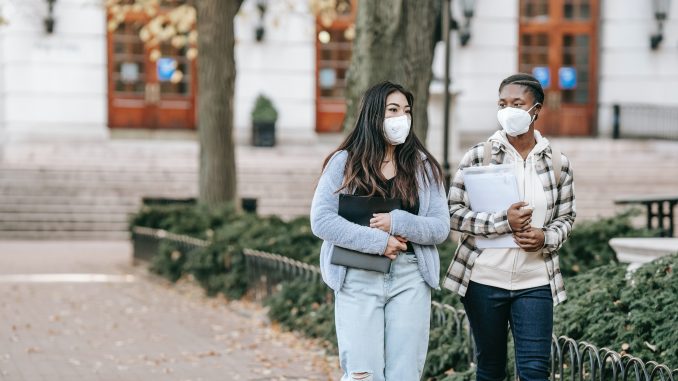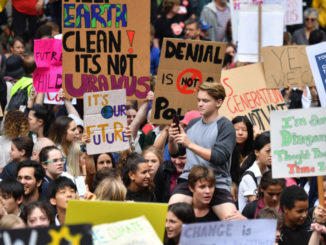
(To listen to the complete interview with Michelle Brown, M.S., LMFT click the link above)
“I found myself living the most unhealthy lifestyle I had ever lived.”
Connor, a 21 year old student at Bucknell University, said this while reflecting on his experience as an undergraduate student during the COVID-19 pandemic.
He continues, “I knew that the situation COVID created deteriorated my mental health because it took away my ability to do the things that truly made me happy.”
Connor’s time at Bucknell was irreversibly interrupted when the pandemic forced him and his cohort to shelter and isolate, both on campus and at home, during his freshman and sophomore year.
Students experienced constant unease as schedules and living arrangements continued to shift with the lifting and reimplementation of COVID restrictions.
The almost daily uncertainty, the inability to form strong, new friendships on campus and meet fellow students and the near impossibility to perform otherwise regular physical activity, took a crippling toll on college students like Connor who, at the time, had been on the university swim team.

“Swimming had always been an outlet for me not just to compete but to decompress,” Connor explains, “Eventually I decided to walk away from swimming and tell my coach that I wanted to go home for the remainder of the year. I no longer cared if it would stain my reputation on the team. Remaining on campus would have continued to deteriorate my mental health.”
Australia’s borders have only been open now for just over a year since the pandemic began in early 2019 and, although travel is resuming, families and loved ones are reuniting and students are going back to on-campus learning from “Zoom school”, the impact on mental health remains.
As we continue to readjust to a post-COVID world, many organizations are still measuring the toll it has taken on mental wellbeing.
“Pre COVID…I had never felt that I really needed someone to talk to about my general mental health until this time in my life and it was also a time when I felt like I had the least amount of access to those I would feel comfortable doing so”, says Connor.
According to a study conducted by Headspace in collaboration with the National Youth Mental Health Foundation:
3,575 young people [18-25 years old,] received services at a headspace centre between 25th May and 5th June [2020]. The survey asked about the impact of COVID-19 on their current mental health and wellbeing, the impact COVID-19 and lockdown restrictions had on their lives…and on their future aspirations
Also, according to the Headspace study, of those interviewed, 74%, nearly three quarters of participants, reported that their mental health worsened during the time of the pandemic, “86% reported a negative impact on their mood, wellbeing or sleeping and 77% reported a negative impact on their work, study, or financial situation.”

A therapist’s perspective
According to licensed marriage and family therapist, Michelle Brown, M.S., LMFT, the results from the Headspace study are conclusive with her experience in the office both during and since the pandemic.
“It’s been pretty consistent with the uptick [in youth patients] right when the pandemic started, and now that things have cooled down a bit, we’re still noticing a lot of people that are coming in that are having those effects [from COVID and lockdown]. We’re getting a lot of people with anxiety and depression”, says Brown.
In addition to the mental toll the pandemic has taken on this younger population, the long-tail effects of the pandemic are also affecting student’s school work.
Without having had the runway to adjust to making the leap from high school to university, Brown reports seeing a lot of education, social and performance anxiety. Brown continues:
It’s even a little bit more sever than just being uncomfortable or uneasy…they’ve been isolated, for the most part, for so long during these pretty formative young adulthood years that they’re working with maybe a junior high school mentality and now they’re trying to be a sophomore in college. It makes a big difference with your social skills.
Were the effects really that bad?
Still, some remain skeptical of the severity of the mental health crisis on young people during COVID.
A BBC article reported by Philippa Roxby said that, “people’s general mental health and anxiety symptoms hardly deteriorated at all during the pandemic” with some groups hit disproportionately.
“Depression became a little worse overall and among women, older people, university students and those belonging to sexual or gender minorities,” Roxby reports.
But what of these groups? Should it not be taken into account that a large strata of people reported experiencing declining mental health since the pandemic?
BBC is not the only outlet to report such findings, Forbes reported similar outcomes when looking at a study conducted by the British Medical Journal (BMJ) and The Guardian quoted the same study calling the mental health damage “minimal.”
Assessing the critique
When looking at the BMJ study, it must be taken into account that the case studies, in question were “[mostly] from high income (n=105, 77%) or upper middle income (n=28, 20%) countries” as of April 11, 2022.
The study continues, saying, “as of 11 April 2022 our searches identified 94,411 unique citations. We excluded 92,457 after review of titles and abstracts and 1,523 after full text review, leaving 431 studies with longitudinal data. Of those, 276 studies did not include pre-covid-19 data…leaving 137 unique studies from 134 cohorts”
This means that only 134 wealthy, upper middle class subjects were followed over time, longitudinally, and for whom data has been reported.
Overall, as The Center of Independent Studies reports, the youth community is and has been underserved when looking at mental health.
Youth-specific mental health research organisation Orygen reports that 4.6% of the general population who have moderate mental health issues are not receiving adequate or sufficient mental healthcare: ‘…1.2 million Australians with moderate mental ill-health are largely underserved by both Medicare-subsidised mental health supports and may require secondary or tertiary care.’
The general underreporting of youth statistics, coupled with reductive, non-diverse sampling done by the BMJ study, needs to be taken into greater consideration when discussing the severity of the impact of COVID on the youth population.
Additionally, the role of the strain on mental health resources needs to be taken into account in addition to a broader sample population.
As the The Center of Independent Studies finds, “The pandemic has also highlighted and exacerbated Australian mental healthcare system shortcomings that are longstanding, previously and repeatedly identified, and entrenched.”
To look at only a small population and not the surrounding structures is simply too reductive.

A return to normalcy?
Connor and other undergraduate students who get the opportunity to return to campus are, overall, grateful to be there. But so many questions remain about the longterm mental health effects of COVID after the pandemic and about gaps in the healthcare system.
As students graduate, join the workforce and continue on with their lives, only time will reveal the effects of this seminal loss of time.





Be the first to comment